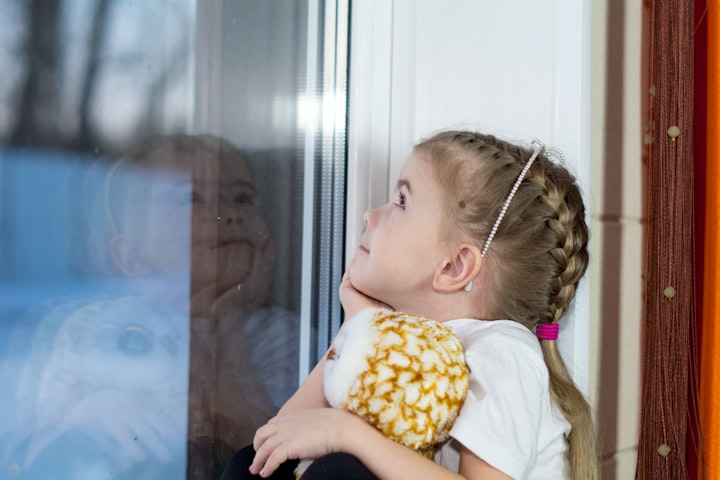Maladaptive daydreaming
Vivid daydreams that mess with everyday living of a person

“Maladaptive daydreaming describes a condition where a person regularly experiences daydreams that are intense and highly distracting” (Meadows, 2021). Another way of definig what maladaptive daydreamng is can be said as - “maladaptive daydreaming is a mental health issue where a person daydreams excessively, sometimes for hours at a time. “Maladaptive” means this type of daydreaming is an unhealthy or negative attempt to cope with or adapt to a problem” (Meadows, 2021).
The indidviduals who experience this type of vivid and detailed daydreams tend to "lose themselves". Which then leads to obsessiveness with wanting to daydream during their workhours or when doing anything in general, according to research. And that, is quite a challenge for most people to exert control trying not to daydream.
Maladaptive daydreaming is similar to behavioral addictions, a recent Polish study found. When someone has a behavioral addiction, they have an obsessive urge to engage in certain behaviors even when they know that doing so would negatively impact their physical or mental well-being or their ability to function in social, professional, educational, or household settings.
Symptoms
When maladaptive daydreaming occurs, the focus of it is itself diverted to daydreaming entirely. The symptoms and feelings are divided into different categories but the common symptoms that are noticed include:
- Inability to stop daydreaming.
- Very detailed fantasies, with a plotline and characters.
- Difficulty in concentrating on other things.
- Trouble falling asleep.
- The urge to continue the fantasy.
- Disconnecting from what’s happening around them.
- Discovering that triggers like viewing a movie or TV show might cause their daydreams to begin.
- Daydreams that last for several minutes to hours.
Causes
It is widely acknowledged that maladaptive daydreaming is a coping mechanism for getting over prior trauma or social anxiety, even if research hasn't pinpointed the precise cause of the behavior. Children (or peeople of any age) may develop maladaptive daydreaming as a coping mechanism to escape a frightening or upsetting situation. Additional causes might include excessive internalization or dissociative tendencies, which lead people to use maladaptive daydreaming as a coping mechanism for seemingly unsolvable real-world issues.
Treatments
Therapy
You can engage with a therapist to address any underlying trauma and determine what's driving your counterproductive daydreaming. They can even provide customized guidance on how to address your issues. It may be helpful to use grounding techniques, for example. Changing the happy endings of the stories to unhappy ones is a suggestion from some therapists to make your fantasy less joyful.
Cognitive behavior therapy (CBT) and mindfulness meditation appear to have potential benefits, according to an increasing amount of studies. In a 2018 case study, researchers found that the individual decreased daydreaming by around 50%. Similar to the use of fluvoxamine, this may not be applicable to a broader population.
Medications
Drugs used to treat OCD or anxiety may alleviate the symptoms of daydreaming. Should the previously indicated techniques be ineffective, you may want to discuss your medication options with a healthcare professional. An earlier research, published in 2008, found that treating maladaptive daydreaming with fluvoxamine (Luvox) efficiently regulates daydreaming. Doctors also advise taking this medication for people with OCD.
Exposure and response prevention
Reduces the tension that gives rise to compulsions and obsessions. It is thought that this happens partly as a result of a process called habituation, when individuals become less physiologically excited by triggering stimuli or obsessions after being exposed to them often and securely.
Improving the quality of sleep
By adopting healthy sleeping practices, you may be able to obtain higher-quality sleep and potentially even decrease ineffective daydreaming. Reducing the symptoms of daydreaming would be greatly aided by establishing a regular sleep cycle and regimen.
- Make time for yourself to get at least seven hours of sleep each night.
- Create a sleep-promoting habit to help you unwind before bed.
- Weekly workouts and a healthy diet.
Get Support
It's important to inform loved ones and friends about your symptoms if you trust them. This will keep the relationship from being damaged by your daydreaming while yet enabling these people to help you by interrupting you when they see symptoms emerging.
Summary
A symptom of maladaptive daydreaming is highly structured imaginations or difficult-to-control daydreams. It's possible that you'll get a sense of being trapped in a complex internal world with several characters. But you'll also come to understand that this isn't the real world. Specialists are unable to determine what causes harmful daydreaming. Some possible explanations include past trauma, problems with day-to-day challenges, and having a different diagnosis, such as ADHD. Maladaptive daydreaming is not associated with any specific cause or treatment plan. CBT and ERP are two effective therapies for anxiety and OCD. Maladaptive daydreamers may benefit from co-occurring disorder therapy as well.
If your fantasies become so intrusive that they are interfering with your everyday life, you should consult a mental health expert or your physician. In doing so, you may help yourself develop defensive mechanisms against destructive daydreaming, such as addressing any repressed memories from the past that could be relevant. Your doctor's initial advice is usually for psychotherapy or mental health therapy. Your physician may also advise treating related conditions such as ADHD therapy. By doing that, you can assist that illness as well as your harmful daydreaming.
References:
Benisek, A. (2022). What Is Maladaptive Daydreaming? [online] WebMD. Available at: https://www.webmd.com/mental-health/maladaptive-daydreaming [Accessed: 2 Feb. 2024].
Cirino, E. (2017). Maladaptive Daydreaming: Scale, Symptoms, and Treatments. [online] Healthline. Available at: https://www.healthline.com/health/mental-health/maladaptive-daydreaming#outlook [Accessed: 2 Feb. 2024].
Cleveland Clinic (2022). Maladaptive Daydreaming: What It Is, Symptoms & Treatment. [online] Cleveland Clinic. Available at: https://my.clevelandclinic.org/health/diseases/23336-maladaptive-daydreaming [Accessed: 2 Feb. 2024].
Fletcher, J. (2023). Maladaptive Daydreaming: Definition, Symptoms, and How to Cope. [online] Psych Central. Available at: https://psychcentral.com/health/maladaptive-daydreaming#takeaway [Accessed: 2 Feb. 2024].
Yuko, E. (2021). What Is Maladaptive Daydreaming? [online] Verywell Health. Available at: https://www.verywellhealth.com/maladaptive-daydreaming-5194802#toc-treatments [Accessed: 2 Feb. 2024].





Comments
There are no comments for this story
Be the first to respond and start the conversation.